MicroRNA-138 Inhibits Cell Growth, Invasion, and EMT of Non-Small Cell Lung Cancer via SOX4/p53 Feedback Loop
- PMID: 28653608
- PMCID: PMC7844796
- DOI: 10.3727/096504017X14973124850905
MicroRNA-138 Inhibits Cell Growth, Invasion, and EMT of Non-Small Cell Lung Cancer via SOX4/p53 Feedback Loop
Abstract
Many studies have shown that downregulation of miR-138 occurs in a variety of cancers including non-small cell lung cancer (NSCLC). However, the precise mechanisms of miR-138 in NSCLC have not been well clarified. In this study, we investigated the biological functions and molecular mechanisms of miR-138 in NSCLC cell lines, discussing whether it could turn out to be a therapeutic biomarker of NSCLC in the future. In our study, we found that miR-138 is downregulated in NSCLC tissues and cell lines. Moreover, the low level of miR-138 was associated with increased expression of SOX4 in NSCLC tissues and cell lines. Upregulation of miR-138 significantly inhibited proliferation of NSCLC cells. In addition, invasion and EMT of NSCLC cells were suppressed by overexpression of miR-138. However, downregulation of miR-138 promoted cell growth and metastasis of NSCLC cells. Bioinformatics analysis predicted that SOX4 was a potential target gene of miR-138. Next, luciferase reporter assay confirmed that miR-138 could directly target SOX4. Consistent with the effect of miR-138, downregulation of SOX4 by siRNA inhibited proliferation, invasion, and EMT of NSCLC cells. Overexpression of SOX4 in NSCLC cells partially reversed the effect of miR-138 mimic. In addition, decreased SOX4 expression could increase the level of miR-138 via upregulation of p53. Introduction of miR-138 dramatically inhibited growth, invasion, and EMT of NSCLC cells through a SOX4/p53 feedback loop.
Conflict of interest statement
The authors declare no conflicts of interest.
Figures

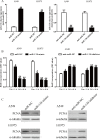

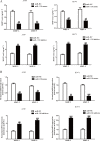
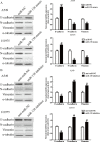
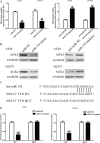
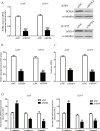
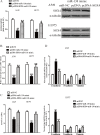
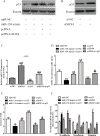
Similar articles
-
p53/miR-30a-5p/ SOX4 feedback loop mediates cellular proliferation, apoptosis, and migration of non-small-cell lung cancer.J Cell Physiol. 2019 Dec;234(12):22884-22895. doi: 10.1002/jcp.28851. Epub 2019 May 23. J Cell Physiol. 2019. PMID: 31124131
-
miR-363-3p inhibits migration, invasion, and epithelial-mesenchymal transition by targeting NEDD9 and SOX4 in non-small-cell lung cancer.J Cell Physiol. 2020 Feb;235(2):1808-1820. doi: 10.1002/jcp.29099. Epub 2019 Jul 22. J Cell Physiol. 2020. PMID: 31332786
-
The effect of microRNA-129 on the migration and invasion in NSCLC cells and its mechanism.Exp Lung Res. 2018 Aug;44(6):280-287. doi: 10.1080/01902148.2018.1536174. Epub 2018 Nov 26. Exp Lung Res. 2018. PMID: 30475081
-
SOX4: Epigenetic regulation and role in tumorigenesis.Semin Cancer Biol. 2020 Dec;67(Pt 1):91-104. doi: 10.1016/j.semcancer.2019.06.022. Epub 2019 Jul 2. Semin Cancer Biol. 2020. PMID: 31271889 Review.
-
Overview upon miR-21 in lung cancer: focus on NSCLC.Cell Mol Life Sci. 2018 Oct;75(19):3539-3551. doi: 10.1007/s00018-018-2877-x. Epub 2018 Jul 20. Cell Mol Life Sci. 2018. PMID: 30030592 Free PMC article. Review.
Cited by
-
Down-regulation of microRNA-138 improves immunologic function via negatively targeting p53 by regulating liver macrophage in mice with acute liver failure.Biosci Rep. 2019 Jul 18;39(7):BSR20190763. doi: 10.1042/BSR20190763. Print 2019 Jul 31. Biosci Rep. 2019. Retraction in: Biosci Rep. 2023 Jun 28;43(6):BSR-2019-0763_RET. doi: 10.1042/BSR-2019-0763_RET. PMID: 31152110 Free PMC article. Retracted.
-
Aberrant expression of miR-138 as a novel diagnostic biomarker in systemic sclerosis.Biomark Insights. 2022 Dec 8;17:11772719221135442. doi: 10.1177/11772719221135442. eCollection 2022. Biomark Insights. 2022. PMID: 36518749 Free PMC article.
-
Linc-ROR Promotes EMT by Targeting miR-204-5p/SMAD4 in Endometriosis.Reprod Sci. 2023 Sep;30(9):2665-2679. doi: 10.1007/s43032-023-01204-0. Epub 2023 Mar 14. Reprod Sci. 2023. PMID: 36917423
-
The positive feedback loop of lncRNA DANCR/miR-138/Sox4 facilitates malignancy in non-small cell lung cancer.Am J Cancer Res. 2019 Feb 1;9(2):270-284. eCollection 2019. Am J Cancer Res. 2019. PMID: 30906628 Free PMC article.
-
MicroRNA-374b mediates the initiation of non-small cell lung cancer by regulating ITGB1 and p53 expressions.Thorac Cancer. 2020 Jun;11(6):1670-1678. doi: 10.1111/1759-7714.13457. Epub 2020 May 4. Thorac Cancer. 2020. PMID: 32364676 Free PMC article.
References
-
- van Zandwijk N, Fong KM. Update in lung cancer: Prologue to a modern review series. Respirology 2015;20(2):183–4. - PubMed
-
- O’Dowd EL, Baldwin DR. Early diagnosis pivotal to survival in lung cancer. Practitioner 2014;258(1776):21–4. - PubMed
-
- Zhao Q, Li P, Ma J, Yu X. MicroRNAs in lung cancer and lung cancer bone metastases: Biomarkers for early diagnosis and targets for treatment. Recent Pat Anticancer Drug Discov. 2015;10(2):182–200 - PubMed
-
- Wang H, Wu S, Zhao L, Zhao J, Liu J, Wang Z. Clinical use of microRNAs as potential non-invasive biomarkers for detecting non-small cell lung cancer: A meta-analysis. Respirology 2015;20(1):56–65. - PubMed
MeSH terms
Substances
LinkOut - more resources
Full Text Sources
Other Literature Sources
Research Materials
Miscellaneous
